#nature fact
Photo
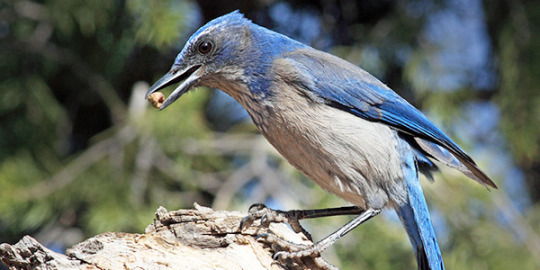

Fun Fact
Western scrub-jays appear to have “funerals” in reaction to finding a dead jay. They will screech over the body, attracting other jays, for as long as 30 minutes and stay near the body for a day or two.
source: https://www.nwf.org/Educational-Resources/Wildlife-Guide/Birds/Western-Scrub-Jay
56 notes
·
View notes
Text

A brutalist arcade in New Zealand.
#interesting#interesting facts#nature#discover#thats interesting#thats insane#thats incredible#like woah#brutalism#brutalist#architettura#architecture#what the shit#what then#what the heck#what the flip#what the hell#arcade#arcades#woah#woahhhh#woah dude#woah :0#but woah#woah woah woah#woahg#woah who said that#what the#whatthe#new zealand
13K notes
·
View notes
Text

26K notes
·
View notes
Text
hey remember when pop-ups and banner ads were associated with malware? when youtube didn't have any ads at all? when you could get a cheap netflix subscription that was better than cable TV? digital marketing experts estimate that most americans see 5-10k ads every day. what the hell is going on
65K notes
·
View notes
Text

#funny#lol#haha#humor#meme#memes#tweet#twitter#animal#animals#cute animals#baby animals#dank memes#dark humor#nature#naturecore#facts
5K notes
·
View notes
Text
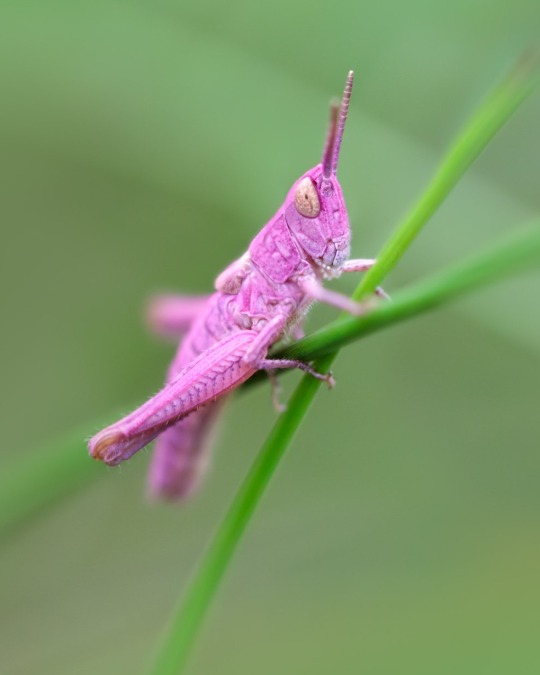
Have you ever seen a pink grasshopper? Though the meadow grasshopper (Chorthippus parallelus) is typically distinguished by its green and brown coloration, a genetic mutation called erythrism leaves some individuals looking pretty in pink! Erythrism is the overproduction of red pigment. While these rare insects are beautiful to look at, pink grasshoppers are hindered by their vivid coloring because it makes hiding from predators much more difficult.
Photo: Back from the Brink, CC BY-NC 2.0, flickr (Meadow grasshopper nymph pictured)
#science#nature#natural history#animals#grasshopper#insec#pink#erythrism#did you know#fun fact#fact of the day#meadow grasshopper
4K notes
·
View notes
Text

The only MALE in the animal kingdom,
to give birth to its young
is the Sea Horse! ... Nature fact
Just a reminder,
Human males are not sea horses!!! ... Misha
0 notes
Photo
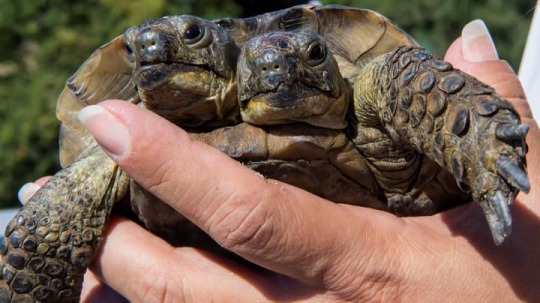
Two-headed tortoise Janus turns 25!
Janus, who also has two hearts, two pairs of lungs and two distinct personalities, would not have survived long in the wild as he cannot retract his heads into his shell to seek shelter from predators. But at the Geneva Natural History Museum, where he hatched in 1997, Bourgoin and her team of carers - who believe he is the world's oldest bicephalic tortoise - can cater for his every need!
He is under constant surveillance in case he flips over, which could be fatal, and survived a bladder stone operation in 2020. His heads need periodic treatment with vaseline to stop them getting sore when they rub together.
His two personalities also generate different moods and tastes that can occasionally lead to conflict, for example over which direction to walk. "The right head is more curious, more awake, it has a much stronger personality. The left head is more passive and loves to eat," Bourgoin said, adding that one head was partial to endives and the other to carrots.
24K notes
·
View notes
Text




the most viewed image in the world is ‘bliss’ by Charles o’rear (1941). It was featured as a default windows xp background.
“Bliss” was taken in January 1996 while driving through California’s napa and sonoma counties.
(via)
#thought this was so cute so had to share#windows#cottagecore#nature#naturecore#photography#windows xp#most viewed#fun fact#cool facts#cute#wholesome#screensaver
45K notes
·
View notes
Text
In Heat: Climate Change’s Cold-Blooded Disruption of Animal Reproduction

Climate change is having a profound effect on the world around us. Many are well talked about like increased forest fire activity, heat waves, and droughts. But there are many subtler and equally disastrous changes afoot for worsening the biodiversity crisis. One of the lesser-known impacts is the effect rising temperatures has on the sex ratios of amphibians and reptiles. As the Earth's temperatures continue to fluctuate in extreme ways, it causes significant changes in the ratio of females to males being born for certain species. An out-of-sync ratio has obviously serious implications for the future of these species and the ecosystems they inhabit as reproduction is impacted.
In many species of amphibians, the sex of an individual is determined by the temperature of the environment during a critical period of development. This is known as Temperature-dependent Sex Determination (TSD). In species with TSD, warmer temperatures during development typically result in more females, while cooler temperatures result in more males. This process is essential for maintaining healthy populations of amphibians, but it is also highly sensitive to changes in temperature.
As global temperatures continue to rise, this delicate balance is being disrupted, leading to significant changes in the sex ratios of amphibians. In some cases, warmer temperatures are causing a disproportionate number of females to be born, which can lead to a lack of genetic diversity and reduce the overall fitness of the population. In other cases, cooler temperatures are resulting in a greater number of males, which can lead to competition for mates and further reduce genetic diversity.
One of the most well-studied examples of this phenomenon is the red-eyed treefrog (Agalychnis callidryas), a species found in Central and South America. Researchers have found that as temperatures increase, more females are being born, and the ratio of males to females is becoming increasingly imbalanced. Another example, a study of the European Common Frog (Rana temporaria) in the UK found that warmer temperatures resulted in a higher proportion of females. Similarly, a study of the Western Chorus Frog (Pseudacris triseriata) in Canada found that warmer temperatures resulted in fewer males. Similar effects are found on Sea Turtle populations and other reptiles.
In addition to TSD, some species have genetic sex determination, where sex is determined by the presence or absence of certain chromosomes. However, even in species with genetic sex determination, temperature can still play a role in determining sex. For example, researchers have found that exposure to warmer temperatures during development can cause male-typical gene expression patterns in female embryos of frogs.
Amphibians are a diverse group of cold-blooded animals that rely on their environment to regulate their body temperature. This makes them particularly vulnerable to changes in their habitat. Beyond sex effects, temperature fluctuations caused by climate change stand to devastate the population.
The effect of climate change are much more complicated than they may seem on the surface. As global temperatures continue to rise, the delicate balance of TSD is being disrupted, resulting in imbalanced sex ratios and reduced genetic diversity. This could have serious implications for the long-term survival of amphibian populations, which are already facing numerous threats, including habitat loss, pollution, and disease.
When you join Life After Life you save two frogs with one stone - you secure a sustainable death care plan for your loved ones, and you increase green space and endangered habitat in your community. In addition to being the most energy efficient way of sequestering carbon at the root of climate change, developing lush park spaces combats the heat island effect in metropolitan areas, cooling down the surrounding area.
#life after life#conservation#climate change#climate crisis#amphibians#sex ratio#science#nature fact#animal fact#symbiosis#biodiversity#sustainability#green living#green burial#transcend#death positive#one last good deed#think long term#natural burial#cemetery#conservation cemetery#memorial park
0 notes
Text

Capybara looks like It’s wearing clothes due to the reflection.
#interesting#interesting facts#nature is everything#nature is weird#nature#discover#thats interesting#animals#thats incredible#thats insane#capybara#capybaras#animals are awesome#animals are friends#animals are better than people#animals are the best#nature is wild#nature is scary#nature is awesome#nature is amazing#nature is art#nature is beautiful#nature is healing#woahhhh#like woah#woah#woah dude#woah :0#woah woah woah#but woah
10K notes
·
View notes
Text
Cave fish time!!
Cryptotora thamicola or the waterfall climbing cave fish are extremely rare, found in only eight caves on the border of Thailand and Myanmar. Like most cave fish they are blind and pigmentless but what makes them special is there ability to cling to walls and climb up flowing water.
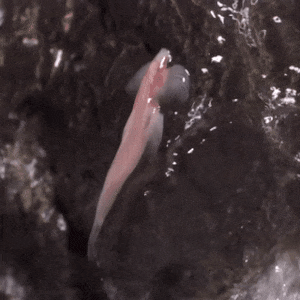




#fishblr#marine biology#caves#spelunking#cave fish#caving#nature#strange#gif#fish facts#fish#fresh water
9K notes
·
View notes
Text
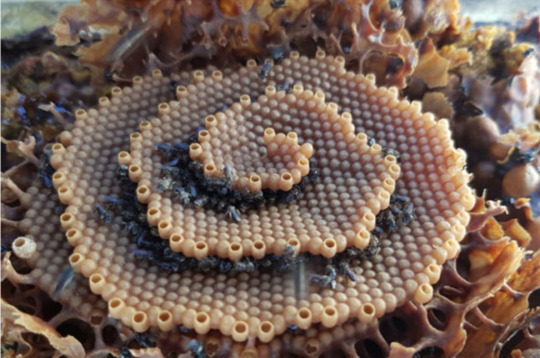

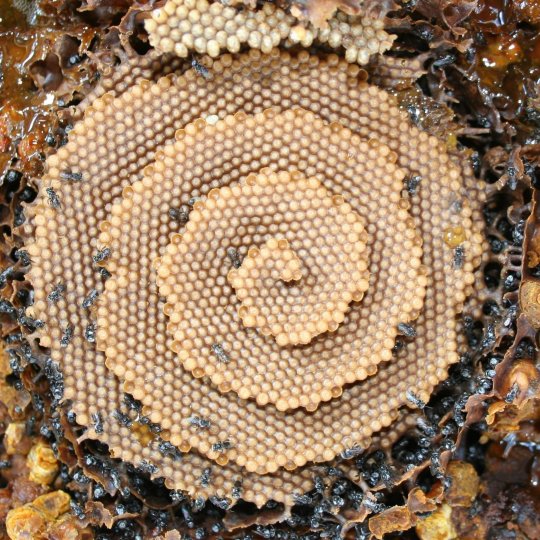
Fun fact: the stingless bees Tetragonula carbonaria can make beautiful spiral structures in their hives to house their young!
Source: Tim Heard, for a paper on how this mimics crystal growth
13K notes
·
View notes
Text
"I think it's sweet," Steve says.
Robin wrinkles her nose. "Nothing about Eddie Munson is sweet. He's a sewer rat, at best. Or like twenty opossums in a trench coat."
"Opossums are cute."
"He probably has rabies."
"You say that about me all the time, so I guess that's good. We'll have rabies together."
"He gave you a rock."
"You give me rocks all the time," Steve says, rolling his eyes. He runs his thumb along the textured edge of the rock Eddie'd handed to him.
"Yeah, good rocks." Robin scoffs. "That one sucks."
#steddie#stobin#autism eddie and robin but they have different tastes in rocks#robin like smooth ones especially if they're shiny#eddie likes the ones that are shaped a certain way with texture#steve has jars FULL of their gifts#IS the rock collection/gifting thing an autism-ism??? me and my undiagnosed/undefined mental state does not know#ALSO opossums are naturally extremely resistant to rabies!! fun fact from your local opossum defender yaba
2K notes
·
View notes
Text




#landscape#paradise#nature#adventure#explore#travel#travelling#naturecore#cottagecore#tweet#twitter#memes#meme#facts#science#photography#architecture
4K notes
·
View notes
Text

Imagine a pinecone as heavy as a bowling ball and the size of a chihuahua. Believe it or not, such pinecones exist—and they belong to the coulter pine (Pinus coulteri), a conifer that can be found in parts of North America including California and Mexico. Infamous among loggers and foresters, this tree is nicknamed "the widowmaker" because of the unlucky individuals who met their fate as a result of its falling pinecones. This species produces the largest pinecones on the planet, weighing up to 11 lbs (5 kg)!
Photo: damontighe, CC BY-NC 4.0, iNaturalist
#science#nature#natural history#trees#botany#pinecone#fact of the day#did you know#conifers#pine cones#plants#widowmaker#forest
4K notes
·
View notes